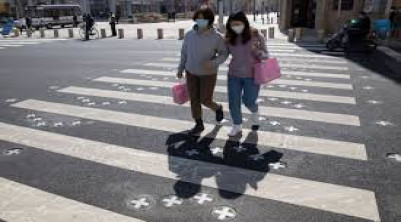
The influence of Covid-19 on each country’s economy is a complex product of a number of factors, including the degree of lockdown, the financial soundness of businesses, and the pattern of industrialization. Each country government’s response is determined by its financial strength, political structure, and current socioeconomic conditions. Stimulus programmes, for example, must strike a balance between forsaking tax revenue and assisting businesses in resuming operations. Before we look at China’s recovery efforts from an Indian perspective, there are a few key contrasts and parallels to be aware of. During the first wave, India ordered a statewide lockdown, while there was a regional variance in the severity and duration of the lockdowns in China. In China, public sector businesses, which have more stable finances, account for a larger share of industry. This gives the government more power over the economy. The ratio of tax income to Gross Domestic Product is one metric where India and China are on par (GDP). This characteristic may influence governments’ willingness to forego tax income in order to assist businesses facing cash flow problems. Given that China has released approximately 10,000 different government directives to aid the recovery process, this study will not be able to provide a thorough assessment of these initiatives. Instead, it will seek to give an overview of the major directives issued by a few key government agencies, as well as distinct kinds of actions aimed at specific stakeholders. The goal isn’t to judge these policies; rather, it’s to stimulate discussion on whether the underlying issues that motivate China’s policies have similarities in India.
Resumption of work: On February 15, 2020, a speech delivered by Xi Jinping two weeks prior was published, signalling China’s intention to resume economic operations. The State-owned Assets Supervision and Administration Commission (SASAC) claimed two weeks later that 48,000 SOEs had resumed work at a rate of 91.7 percent. Only indices like as traffic congestion and pollution can be used to estimate private-sector job restoration. One advantage of job resumption by directive is the extensive planning required for its implementation.
Fiscal and monetary measures: Fiscal and monetary measures totaling RMB 2.6 trillion (or 2.5 percent of GDP) were announced, with measures totaling 1.2 percent of GDP being executed. The People’s Bank of China (PBC) used open market operations to inject RMB 3.27 trillion (gross) into the banking sector. It also increased relending and re-discounting facilities by RMB 1.8 trillion to help medical supply manufacturers, micro, small, and medium-sized manufacturers of everyday commodities, and the agriculture sector avoid shortages. In addition, policy banks have been instructed to lend RMB 350 billion to micro and small businesses (MSEs).
Exemptions, rate reductions, deferments, and deductibles are all examples of effective tax measures that can be used to influence economic activity. The extension of the term during which businesses can carry forward losses from five to eight years was one of the first statewide tax relief measures announced in China. Other measures included a one-week and two-month delay in the deadlines for monthly and annual tax submissions, respectively. These low-cost techniques helped alleviate cash flow issues without creating a major drop in revenue collection.
Financial incentives: A sudden halt in economic activity has a different impact on each industry. Individual businesses within the same industry may see different effects based on their financial situation. As a result, when relief is scarce, the intelligence that underlies its deployment becomes critical. China was well aware of the problem from the start.





